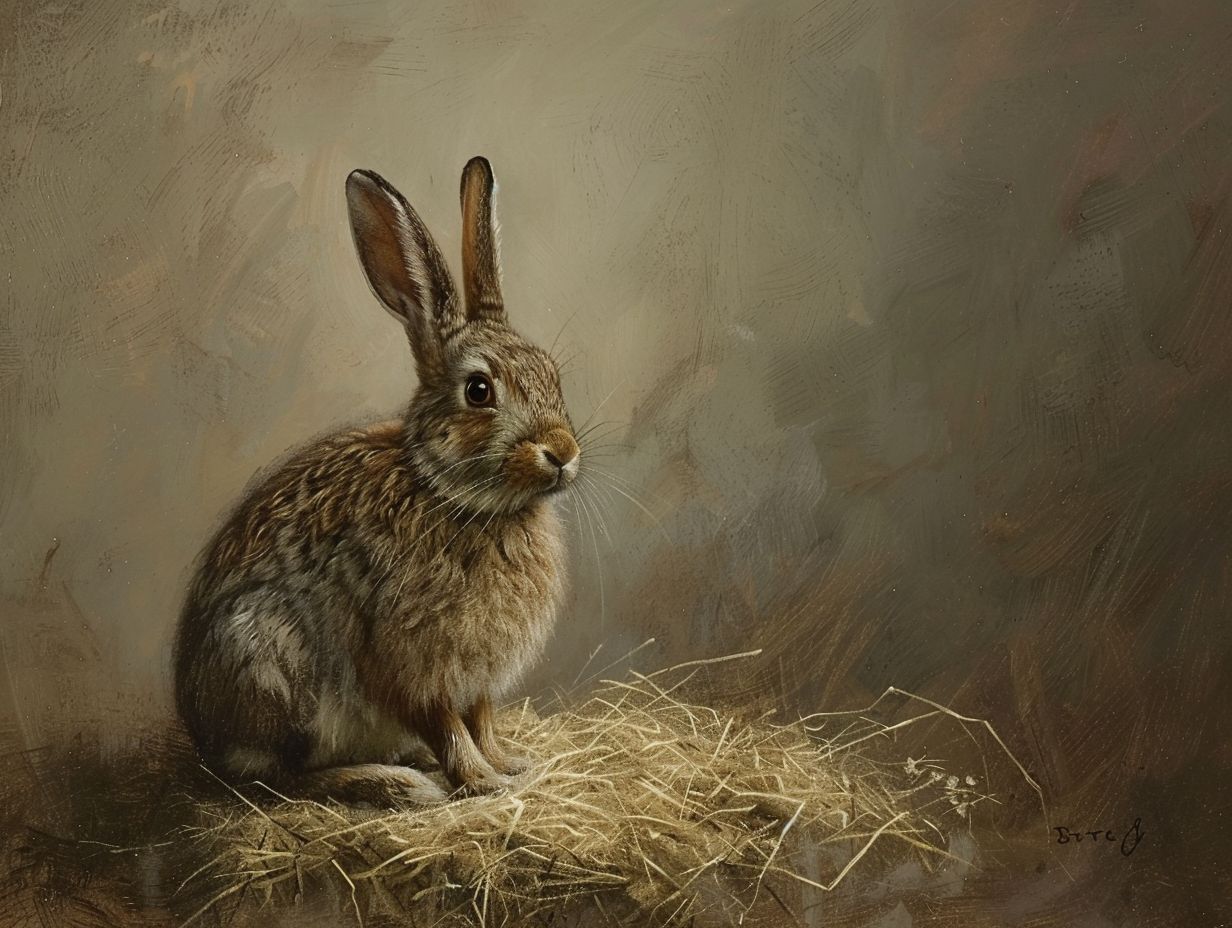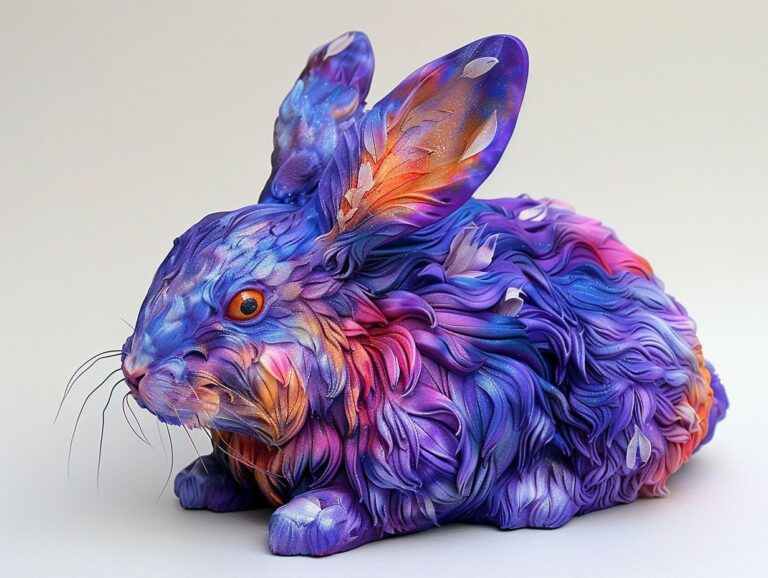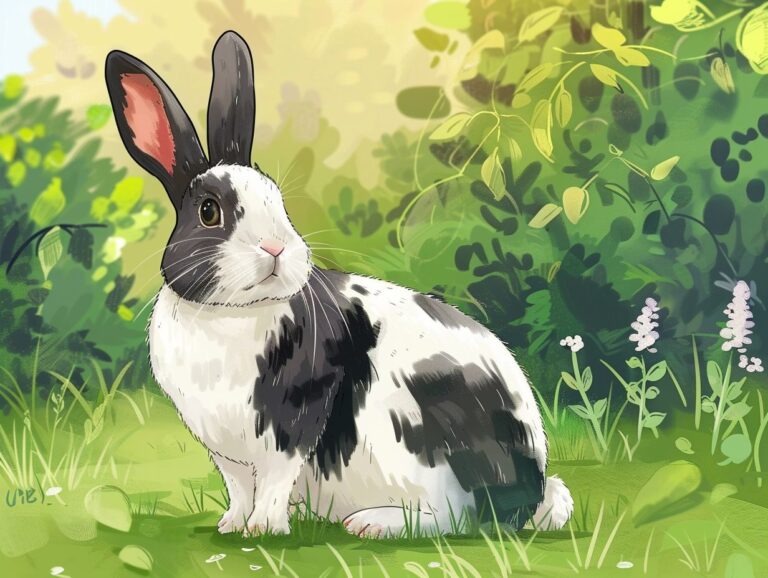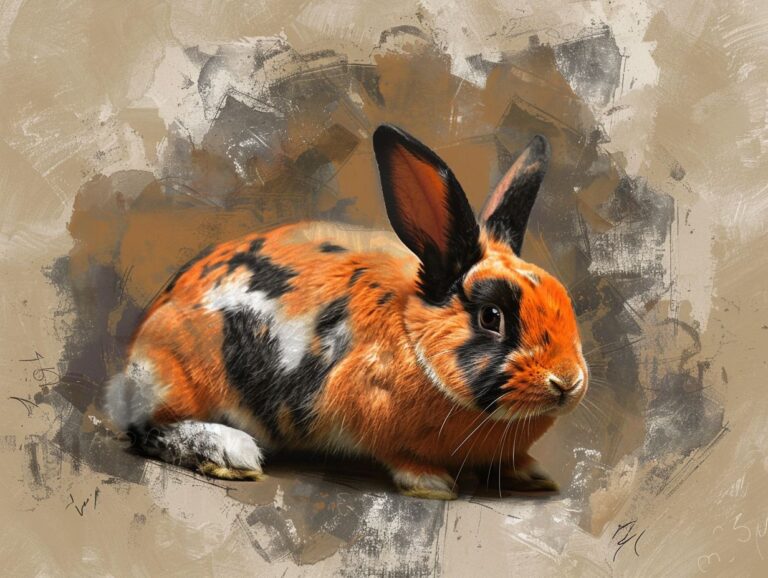Britannia Petite Rabbit Breed: Characteristics, Care, History, and Breeding Practices
Curious about the charming Britannia Petite rabbit breed?
In this comprehensive article, we will explore the characteristics, history, and care requirements of these delightful rabbits.
From their size and coat colors to their lifespan and temperament, we will cover all you need to know about Britannia Petites.
We will discuss the proper care and breeding practices for these unique rabbits.
So, grab a cup of tea and join us as we dive into the wonderful world of Britannia Petites!
Key Takeaways:
What Is the Britannia Petite Rabbit Breed?
The Britannia Petite rabbit is a distinct breed known for its petite size and unique characteristics.
These rabbits typically weigh between 2 to 2.5 pounds, making them one of the smallest breeds. They have a sleek and compact body with a short, shiny coat that comes in various colors such as black, blue, chocolate, and white. Their distinctive feature is their upright ears that are proportionate to the size of their head, giving them a charming and alert expression. Britannia Petite rabbits are lively, energetic, and known for their curious and friendly nature, making them excellent companions for those looking for an interactive pet.
What Are the Characteristics of Britannia Petite Rabbits?
Britannia Petite rabbits exhibit specific traits that make them stand out among other rabbit breeds. These characteristics include their petite size, energetic behaviors, and various coat colors.
Size and Weight
The Britannia Petite rabbit is known for its small size, typically weighing around 2-2.5 pounds when fully grown.
These dainty rabbits are compact and delicate, with a slender frame that sets them apart from larger breeds. Despite their diminutive size, Britannia Petites exude elegance and grace with their petite stature.
On average, they measure between 8-10 inches in length, with a distinctive arched body shape that enhances their charm. Their small ears and bright expressive eyes give them an endearing appearance, making them popular pets for those seeking a petite companion.
Coat and Colors
The coat of Britannia Petite rabbits comes in various colors, including Ruby-eyed white, Black Otter, Chestnut agouti, and more.
Britannia Petite rabbits exhibit a wide array of stunning coat patterns and colors, making them a delightful choice for rabbit enthusiasts. Apart from the mentioned colors, these charming rabbits can also sport Blue Tortoise, Chocolate agouti, Sable Marten, and Opal hues. Each color variation creates a unique and eye-catching look, adding to the appeal of this breed.
Along with their diverse coat colors, Britannia Petite rabbits can have various patterns, such as solid, agouti, martens, and tortoise. These patterns enhance the visual interest of the rabbits and contribute to their individual personalities.
Temperament and Behavior
Britannia Petite rabbits are known for their energetic and friendly temperament, making them delightful companions.
These small rabbits possess an innate curiosity and love exploring their surroundings, often darting around playfully. Their friendly nature makes them greet their owners with excitement, and they enjoy being petted and cuddled. Despite their size, Britannia Petites are quite spirited and active, requiring ample space to hop around and burn off excess energy. They are social creatures that thrive on interaction, forming strong bonds with their human companions. Their inquisitive personalities make them fascinating pets to observe and interact with on a daily basis.
Lifespan

Britannia Petite rabbits are known for their small size, weighing only 2-2.5 pounds as adults. Despite their diminutive stature, these rabbits are full of energy and can be quite playful. Ensuring they have a well-balanced diet, plenty of exercise, and regular veterinary check-ups can significantly impact their longevity. They are prone to dental issues, so providing them with adequate chewing opportunities is essential. A stress-free environment and social interaction with their human companions can contribute to their overall well-being and prolong their lifespan.
What Is the History of Britannia Petite Rabbits?
The history of Britannia Petite rabbits traces back to England, where breeders Warren and Wendy Porcha developed them in the 20th century.
The Britannia Petite rabbits were specifically bred to be small and elegant, making them popular show rabbits with their unique petite stature.
Warren and Wendy Porcha, passionate rabbit enthusiasts, meticulously crafted the breed to possess not only a charming appearance but also gentle temperaments, making them delightful companions. If you are considering Britannia Petite rabbits as pets, it is important to understand their care, diet, and health needs for small breeds.
Through selective breeding techniques and dedication to the breed’s refinement, the Porchas established the Britannia Petite as a distinct and beloved rabbit breed in the world of rabbit fanciers.
How to Care for Britannia Petite Rabbits?
Proper care for Britannia Petite rabbits involves a balanced diet, regular grooming, and attentive health monitoring to ensure their well-being and happiness.
Diet and Nutrition
A healthy diet for Britannia Petite rabbits includes a variety of fresh hay, leafy greens, vegetables, fruits, and access to clean water.
Hay is a crucial component of their diet, providing essential fiber for digestive health and dental wear. Leafy greens like kale and romaine lettuce offer vital nutrients and enrich their diet with variety. Incorporating vegetables such as carrots and bell peppers adds diversity and additional vitamins. Fruits like apples and berries serve as tasty treats but should be fed in moderation due to their sugar content. Always ensure fresh water is available to keep your Britannia Petites hydrated and healthy.
Housing and Exercise
Providing a spacious and secure habitat for Britannia Petite rabbits is essential, along with ample opportunities for exercise and enrichment through toys.
These petite rabbits thrive in environments that offer plenty of room to hop, stretch, and explore. Consider setting up a multi-level enclosure with ramps and platforms to encourage their natural behavior. A variety of toys such as tunnels, chew toys, and balls provide mental stimulation and keep them active. Incorporating hiding spots and tunnels in their living space can boost their sense of security and belonging. To ensure they stay fit and healthy, include different surfaces like grass mats or rugs for them to walk and run on.
Grooming and Hygiene
Regular grooming of Britannia Petite rabbits involves brushing their coat to prevent matting and trimming their nails to maintain their hygiene and health.
It is crucial to clean their ears to avoid wax buildup and potential infections. Use a damp cloth or a gentle ear cleaning solution recommended by a vet to carefully clean the outer ear area.
Their teeth also need attention to prevent dental issues, so provide them with chew toys and hay to naturally wear down their teeth. It’s important to remove any soiled bedding regularly to keep their living space clean and odor-free.
Health and Veterinary Care

Britannia Petite rabbits require special attention when it comes to their dental care, as their teeth continually grow throughout their lives. Providing them with adequate chew toys and a diet rich in hay and fresh vegetables helps to naturally wear down their teeth and prevent dental problems. It’s essential to be on the lookout for signs of overgrown teeth, such as drooling, difficulty eating, or weight loss, and seek immediate veterinary care if any issues are detected.
How to Breed Britannia Petite Rabbits?
Breeding Britannia Petite rabbits involves selecting breeding stock carefully, understanding the gestation period, providing proper care for pregnant does, and ensuring the health and well-being of newborn kits.
When choosing breeding stock for Britannia Petite rabbits, pay attention to characteristics like size, fur quality, and temperament to ensure desirable offspring. It’s crucial to monitor the gestation period, which typically lasts around 30 days, to anticipate the arrival of the kits. During this time, pregnant does should be housed in a quiet, stress-free environment and provided with a balanced diet rich in fiber and nutrients.
After birth, the kits require warmth, cleanliness, and regular feeding from their mother. It’s important to handle the newborns with care and monitor their development closely. Remember to consider training requirements for both breeding stock and young rabbits to ensure they are well-socialized and manageable.
Selecting Breeding Stock
When selecting breeding stock for Britannia Petite rabbits, it is essential to follow the guidelines set by organizations like the American Rabbit Breeder’s Association (ARBA) to maintain breed standards and health.
Choosing quality breeding stock is a crucial step in preserving the characteristics and temperament specific to the Britannia Petite rabbits. By adhering to the breeding standards outlined by ARBA, breeders ensure that future generations exhibit the desired traits and qualities.
ARBA standards cover a range of criteria, including body shape, size, fur color, and ear carriage, all of which contribute to the overall conformation of the breed. Establishing a strong foundation through selective breeding practices is fundamental to the long-term health and sustainability of the Britannia Petite rabbit population.
Mating and Gestation
Successful mating and gestation in Britannia Petite rabbits require careful observation, appropriate nesting materials, and monitoring the doe for signs of pregnancy.
During mating, the buck should be introduced to the doe’s cage, and it’s important to monitor their interaction to ensure a successful mating. The gestation period for Britannia Petite rabbits typically lasts around 28-32 days, so it’s vital to provide a comfortable and quiet environment for the pregnant doe.
Nutritious food and plenty of water should be readily available to support the doe’s health and the growth of the developing kits. It’s crucial to regularly check on the doe for any signs of distress or complications during pregnancy.
Caring for Pregnant Does and Newborn Kits
During pregnancy and after birth, ensuring the well-being of pregnant does and newborn kits is essential, providing them with a safe and comfortable environment.
One crucial aspect of caring for pregnant does is to provide them with a quiet, stress-free environment as their due date approaches. Limiting disturbances and offering a nesting box with soft bedding can help them feel secure. It’s important to offer a balanced diet rich in fiber and nutrients to support their health during this crucial period.
After the birth of the kits, maintaining a warm and draft-free space is vital to their survival. Ensure that the nest area is clean and dry, as newborn kits are particularly sensitive to infections. Keep a close eye on the kits’ feeding behavior to ensure they are nursing properly and receiving enough milk from the doe.
Weaning and Separating Litters
Proper weaning and separating of litters in Britannia Petite rabbits involve gradual transition to solid food and separate housing to ensure each kit’s health and development.
As Britannia Petite rabbits reach around 4-5 weeks old, the process of weaning and separation should begin. Start by introducing small amounts of high-quality hay and pelleted food to the kits alongside their mother’s milk. This will help them adjust to solid food gradually.
Separating them from the dam can be done in a gentle manner to reduce stress. Provide each kit with its own individual enclosure to allow for proper monitoring and care tailored to their specific needs. Regularly check their weight and overall condition to ensure they are thriving post-weaning.
Health and Genetic Considerations

Britannia Petite rabbits are a delightful breed known for their small size and friendly disposition. To ensure the future generations of these charming rabbits remain healthy and genetically diverse, responsible breeding practices play a crucial role.
Health considerations involve regular check-ups, proper nutrition, and minimizing stressors to promote overall well-being in the rabbits.
On the genetic front, breeding choices should aim to reduce the risk of passing on hereditary conditions and maintain favorable traits within the breed’s gene pool.
Frequently Asked Questions
What are the characteristics of the Britannia Petite Rabbit breed?
The Britannia Petite Rabbit breed is known for their small size, weighing only 1-2 pounds. They have a compact body shape, with short and dense fur that comes in various colors including chestnut, black, blue, and white. They have large, upright ears and a friendly and curious personality.
How should I care for a Britannia Petite Rabbit?
Proper care for a Britannia Petite Rabbit includes providing a clean and spacious living environment, a balanced diet of hay, vegetables, and pellets, and regular grooming to keep their short fur healthy. They also require socialization and exercise, so it’s important to spend time with them and provide a safe area for them to hop around and explore.
What is the history of the Britannia Petite Rabbit breed?
The Britannia Petite Rabbit breed originated in England in the late 1800s. They were developed by crossing small wild rabbits with domestic breeds, resulting in their small size and friendly temperament. They were first recognized as a distinct breed in the United States in 1924 and are now popular as pets and show rabbits worldwide.
Can I breed Britannia Petite Rabbits?
Yes, Britannia Petite Rabbits can be bred, but it requires careful planning and consideration. Breeding should only be done by experienced and responsible breeders to ensure the health and well-being of both the parent rabbits and the offspring. It’s important to also have a plan for the care and placement of the babies once they are born.
What are some breeding practices for Britannia Petite Rabbits?
Breeding Britannia Petite Rabbits should only be done after the rabbits have reached maturity, which is around 6 months of age. It’s important to carefully select breeding pairs based on their health, temperament, and conformation to the breed standard. Breeding should also be done in a controlled and safe environment to minimize stress and potential health risks for the rabbits.
Are there any health concerns with the Britannia Petite Rabbit breed?
Like all rabbit breeds, Britannia Petite Rabbits are prone to certain health issues such as dental problems, respiratory infections, and digestive issues. It’s important to monitor their health and seek veterinary care if any concerning symptoms arise. Providing a balanced diet and a clean living environment can help prevent many health issues in this breed.






